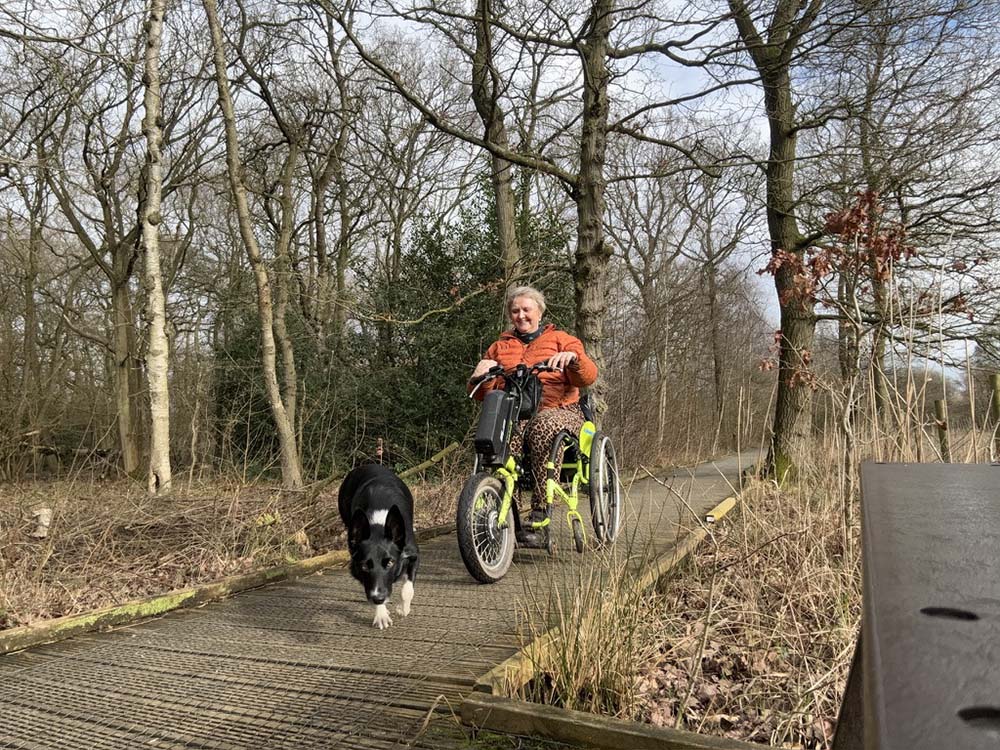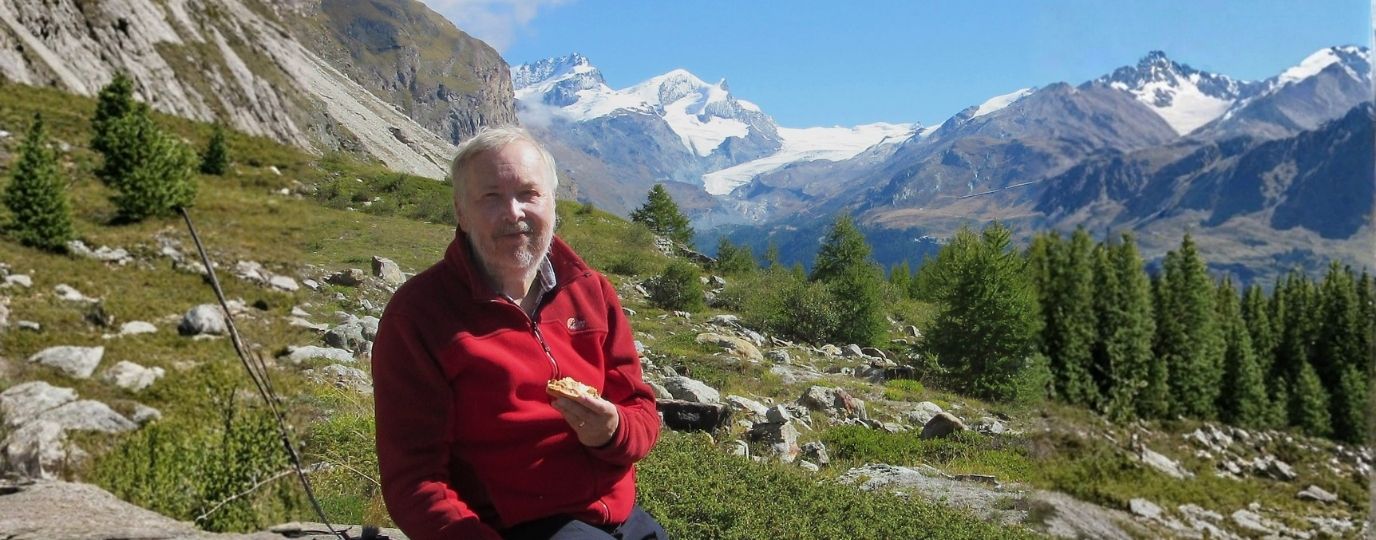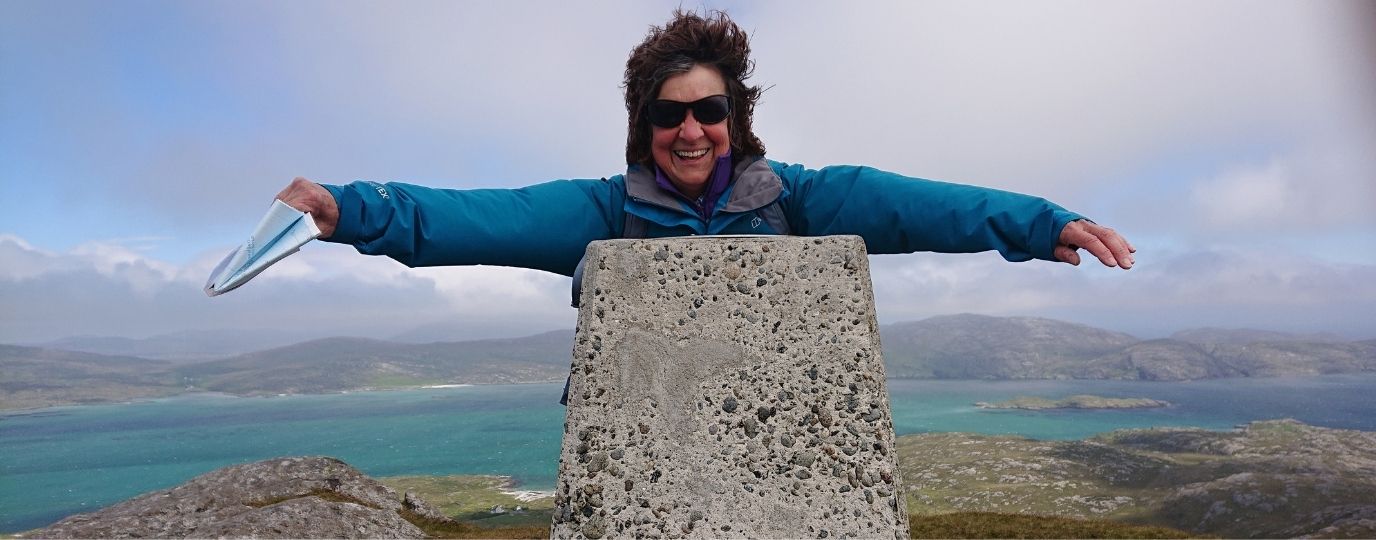How One Woman’s Determination is Making the Outdoors Inclusive for All
“You were made to soar, to crash to earth, then to rise and soar again”
Alfred Wainwright
The first thing you read on Debbie’s website is this quote from Alfred Wainwright, and it couldn’t be more poignant in capturing the essence of this exceptional woman and her story of overcoming a life-changing physical disability.

Debbie North has achieved remarkable feats in her journey to make the great outdoors accessible to everyone. Her passion for adventure and dedication to breaking down barriers have inspired many. She has recently released a brand new book. We wanted to know more about the author behind this inspiring book, the first accessible guide from our popular Pathfinder range of guidebooks.

EXPLORE THE
OS Shop
We are with you every step of the way. Shop our trusted walking and hiking maps and guidebooks so you can explore the outdoors with confidence.
Go to the shopA Life More Adventurous – Meet Debbie North
In this interview, part of our series “A Life More Adventurous,” Debbie shares the motivations behind her incredible challenges and the pride she feels in her accomplishments. She also discusses the significant obstacles wheelchair users face in enjoying nature and offers insights into how these can be overcome. Through her work, Debbie continues to honor the memory of her late husband, Andy, who was her greatest supporter and inspiration. Join us as we explore Debbie’s story, her advocacy for accessible outdoor spaces, and the memorable experiences she has created for countless individuals
You’ve accomplished some incredible feats. What motivates you to take on these challenges and what are you most proud of out of all of your many achievements.
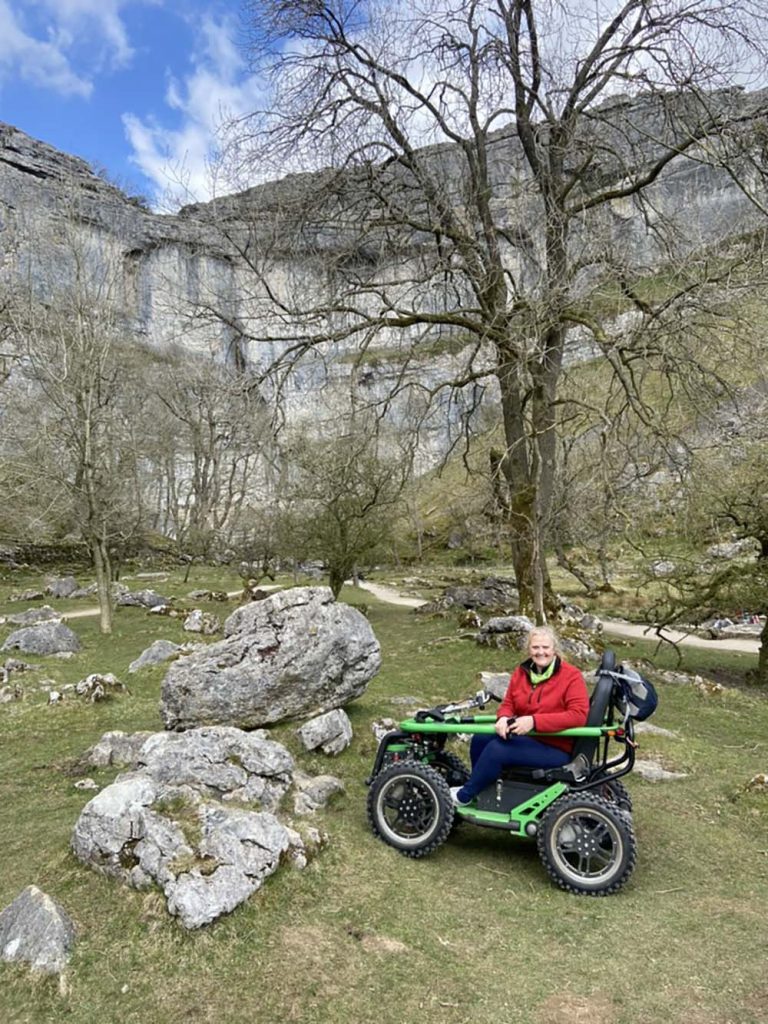
Life has taught me that it’s too short not to embrace your passions wholeheartedly. My late husband, Andy, was my inspiration and constant source of motivation, encouraging me to get outside and stay active even during the toughest times when I was struggling with my health. Andy had an incredible way of pushing me through those hard moments, setting challenges for me to overcome. With my TerrainHopper, I felt empowered and capable of taking on those challenges, and together, we shared many victories.
In 2021, Andy passed away after a relentless battle with a very aggressive form of cancer. His loss left an enormous void, but it also gave me a new reason to keep pushing forward. My motivation now comes from the desire to honour his memory and the love we shared. He would be so proud of all that I am achieving, and I feel his presence with me every step of the way. He was not just my love but the very essence of my life, and I channel this energy into breaking down barriers and continuing to overcome challenges, just as we did together.
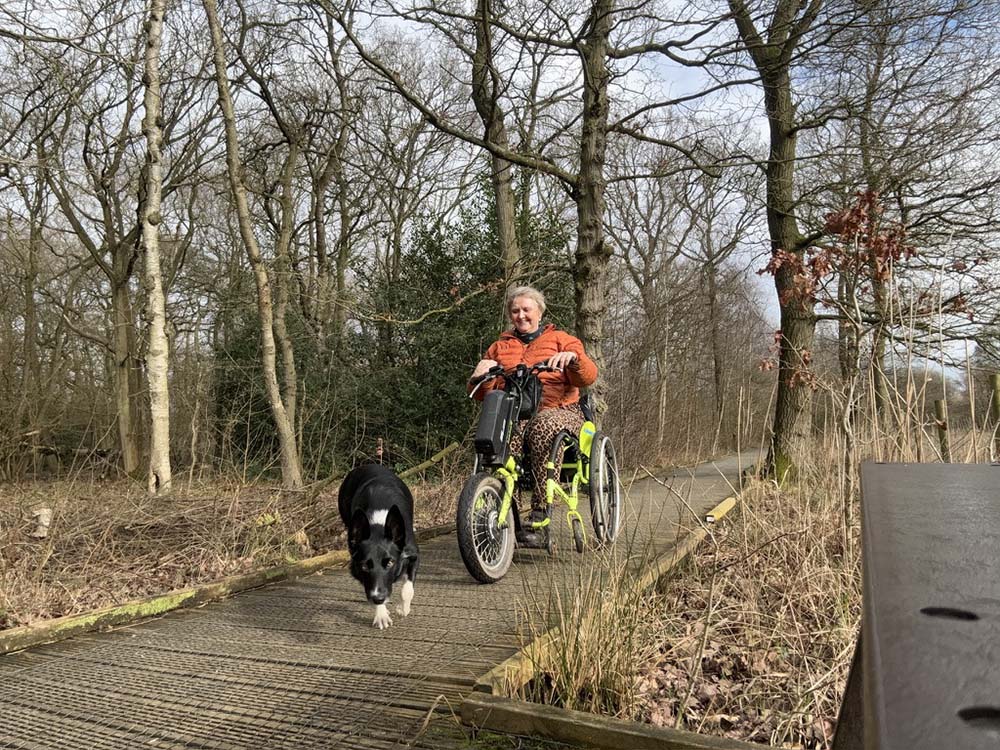
What are some of the biggest barriers wheelchair users face when trying to enjoy the outdoors?
There are numerous barriers that hinder accessibility, but addressing these challenges can open up opportunities for everyone. Key areas for improvement include:
Accessible Information for Personal Choices: Providing clear, comprehensive information is essential to empower individuals to make informed decisions about their access needs. This includes easy-to-understand details on available routes, amenities, and potential obstacles.
Inclusive Pathways, Design, and Sensory Elements: The design of pathways, trails, and public spaces should prioritize surfaces and structures that enhance accessibility for all users. Incorporating sensory experiences, such as tactile elements, visual cues, and soundscapes, can create more immersive and inclusive environments.
Access to Appropriate Equipment: Ensuring access to necessary adaptive equipment—whether through borrowing, renting, or purchasing—is crucial. This includes making sure the equipment is available at designated locations, so individuals can find the right tools for their needs.
Supportive Amenities: Accessibility extends beyond paths and equipment to include essential services such as disability-friendly accommodations, accessible changing spaces and toilets, and quiet areas for those needing a calm environment. These amenities play a key role in making public spaces more welcoming.
Shifting Attitudes Through Inclusive Leadership: A change in mindset is critical to dismantling assumptions about disability and access. This can be achieved by diversifying leadership teams and Boards to include individuals with lived experiences of disability. This helps ensure decision-making reflects the needs of all people.
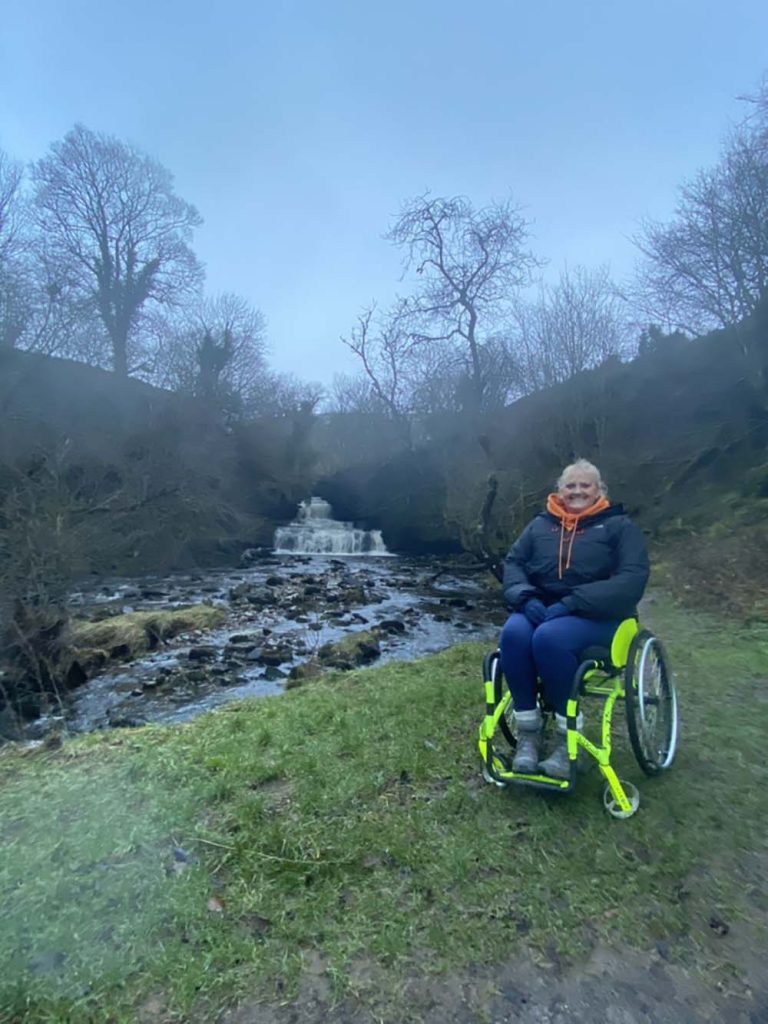
What are some of the unique challenges you faced while researching and documenting these routes?
I have explored every walk featured in the book and relied on the guidance provided in the document “By All Reasonable Means”, which outlines the essential requirements for making stile-free walks accessible to a wide range of people. My goal has been to offer a diverse selection of walks, with options that cater to different needs and abilities.
In creating this collection, I aimed to include routes for everyone, some of which are easily reachable by public transport or designed to accommodate manual wheelchair users. These tend to be shorter walks, with plenty of resting spots along the way, ensuring that those who need frequent breaks can still enjoy the experience.
On the other hand, I also wanted to provide a few more adventurous routes for those seeking a greater challenge. These paths, while still stile-free, are better suited for someone using a robust, all-terrain wheelchair, allowing them to embrace more rugged landscapes without compromising accessibility.
The research for this project has been no small feat, especially as I conducted many of these walk-throughs during the winter months. Although the book includes 33 walks, I have researched around 45, excluding several due to significant barriers like fallen trees blocking the path or locked gates impeding access. I even had an incident where, while using a mobility scooter, I got stuck in the mud in the middle of a forest and had to wait for assistance to get me out of that sticky situation!
It’s been a challenging yet rewarding process, and I hope these carefully selected routes will offer enjoyable and accessible outdoor experiences for a wide variety of people.
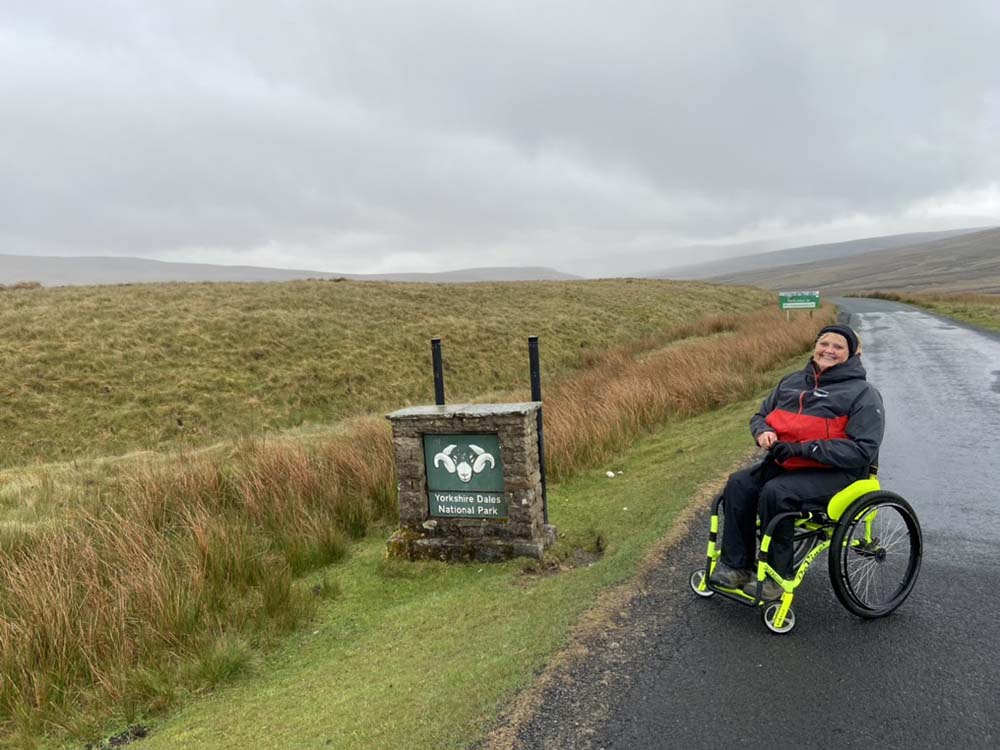
What has been the most rewarding part of your journey in advocating for accessible outdoor spaces?
Seeing people, who for various reasons haven’t been able to access the countryside, finally experience its beauty using all-terrain wheelchairs is heart warming. Watching their faces light up as they connect with nature—experiencing that moment of awe and wonder—is incredibly moving.
I’ve witnessed so many individuals shed tears of joy, overwhelmed by the realisation that they can now access the views and landscapes they once thought were out of reach. Many of them had resigned themselves to the idea that they would never again be able to enjoy the freedom of exploring the outdoors. But through the work of Access the Dales, the charity I founded, these life-changing moments are now possible. The impact of providing them with the ability to use these specialised wheelchairs goes beyond just seeing beautiful views—it restores a sense of freedom, adventure, and connection to the natural world that they may have thought they’d lost forever. It’s a joy not just for them, but for me as well, to be part of something that brings such profound happiness and possibility into their lives.
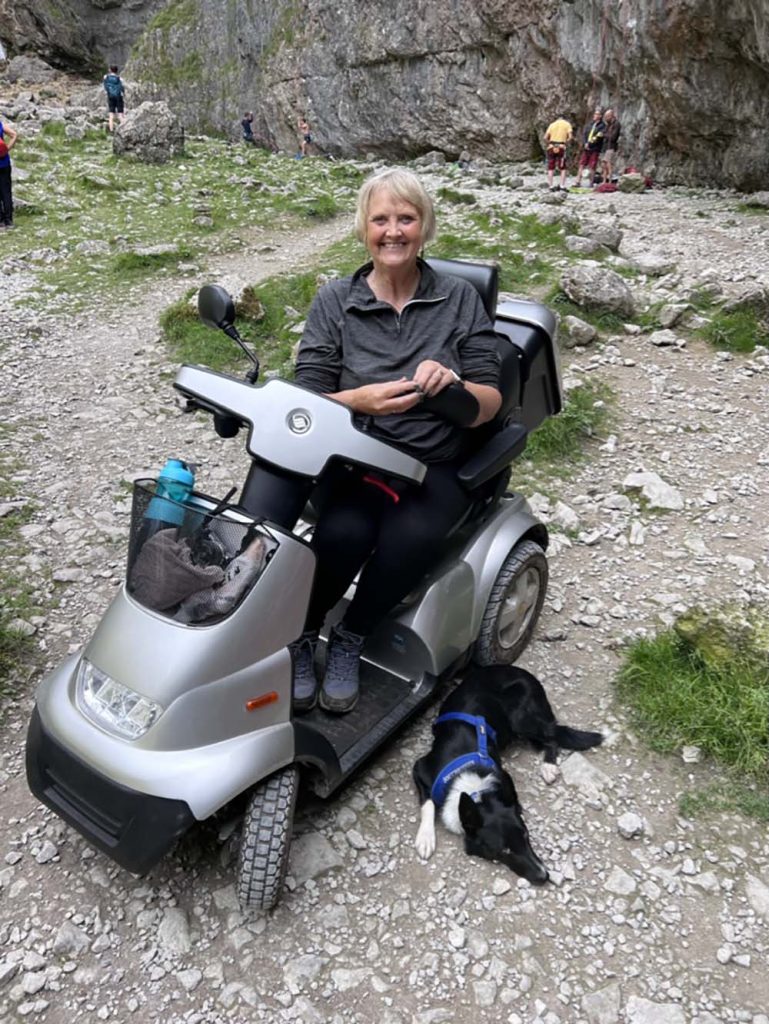
Can you pick your 3 favourite walks featured in the book and tell us why you especially enjoy them?
That’s such a difficult question! Each walk has been enjoyable in its own way, for so many different reasons. Some walks stand out because of their historical significance, like the Cawthorn Roman Camp walk, where you can explore the remains of an ancient Roman camp along with two Roman forts. Then there’s the Rosedale Mineral Trail, which follows the path of the old Rosedale Mineral Railway in North Yorkshire, now a popular walking route with a rich industrial past.
The York Solar System Trail is particularly fascinating. It features a scale model of the Solar System spread across 6.4 miles (10 km) of the old East Coast mainline railway, making for an educational and unique walking experience.
The Whitby Abbey walk is equally captivating, as it takes you along the scenic coastal path with breath taking views of the sea.
Similarly, the Bempton Cliffs walk, also along the coast, is fantastic, especially for nature lovers, as it’s home to the puffins and offers some of the best birdwatching in the region. Each walk has its own charm and special features, making it hard to choose a favourite!
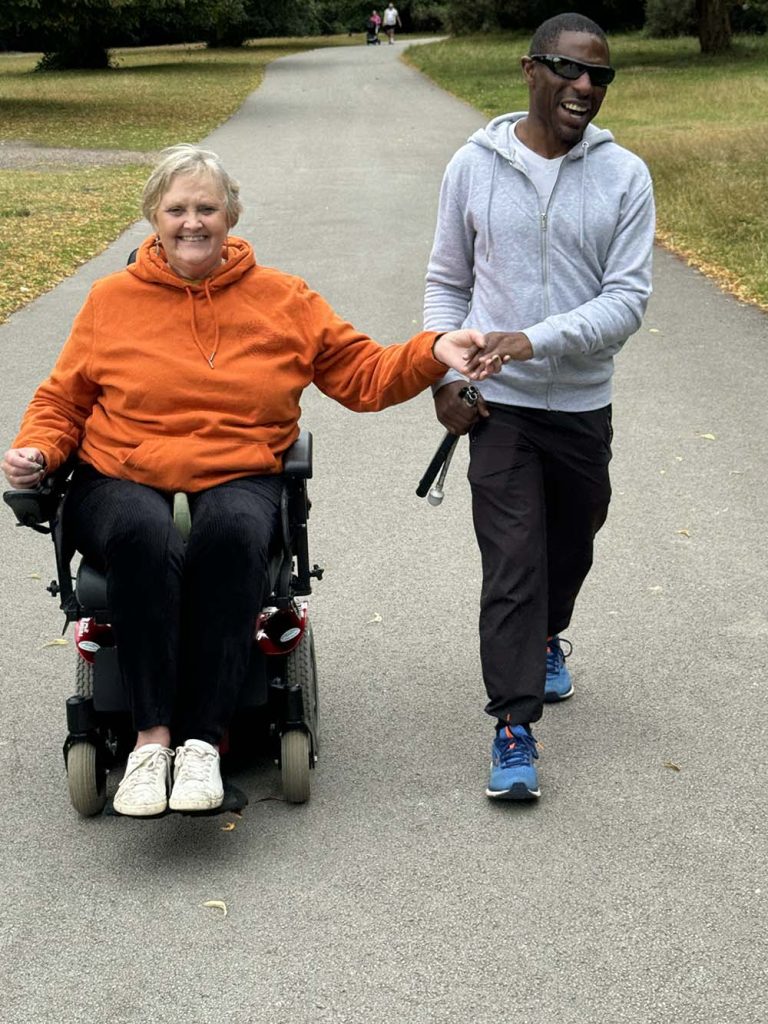
Can you share any memorable stories or feedback from people who have used your guides or followed your routes?
Many of the routes I’ve been out researching, I’ve tackled on my own—something I’m sure breaks every rule in the book. While exploring the route around Swinsky Reservoir, I ran into a bit of trouble when the power on my front wheel attachment for my manual wheelchair unexpectedly ran out halfway through. Fortunately, I was at the top of a hill, so I carefully coasted down and managed to push my wheelchair to a nearby car park. Just when I thought I might be stuck, a kind couple arrived. After explaining my situation, the gentleman offered me a lift back to my car, which was at the other side of the reservoir, whilst the lady kindly stayed with my wheelchair. It was a much-needed stroke of luck, and I’ve since learned my lesson—I now double-check that both my phone and wheelchair are fully charged before setting off on any new adventure!
What advice would you give to other wheelchair users who want to explore the outdoors but are unsure where to start?
For accessible walking routes, start by visiting the National Parks websites and searching for “Miles without Stiles” routes. These routes are designed for people with limited mobility, although sometimes the information can be buried under all the other activities they promote, so you might need to dig a bit.
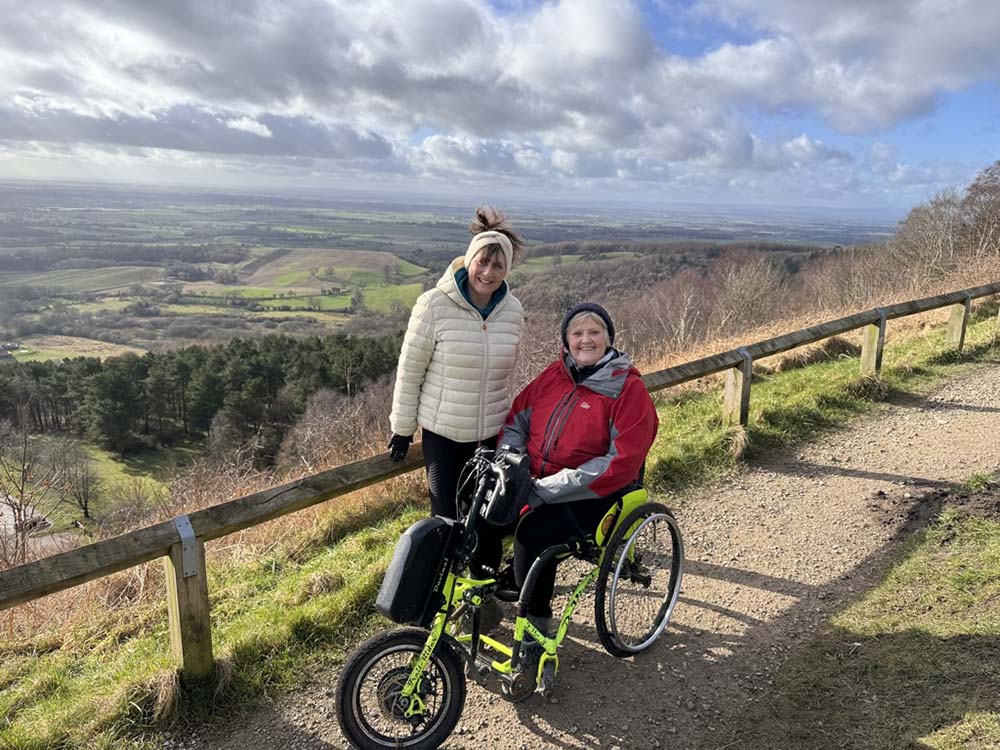
In addition to this, check out Euan’s Guide which reviews accessible places, and explore Countryside Mobility and Outdoor Mobility for additional resources. Don’t forget to visit the website for Access the Dales, the charity I founded to promote accessibility in the outdoors in the Dales.
Most National Trust properties offer wheelchairs for visitors to borrow, and it’s worth looking at your local Wildlife Trust and Woodland Trust sites, as they often promote accessible trails and may even offer all-terrain wheelchairs. And for more detailed suggestions, particularly for walks in North Yorkshire, you could always buy my book!
How can local communities and authorities support the creation and maintenance of accessible trails?
We need greater representation of disabled people on boards and in decision-making roles to ensure that their voices are heard, and that the needs of the most vulnerable are prioritised. When policies and infrastructure cater to those with disabilities, it creates an environment where everyone benefits.
What can people do to help to improve access in their own areas?
To bring about change, start by getting involved in your nearest Local Access Forum, where you can advocate for accessibility improvements. Join existing groups on social media, such as Facebook, to connect with like-minded individuals—there’s strength in numbers.
You can also write to your local council or MP to raise awareness about accessibility issues in your area, volunteer with disability advocacy organisations, and push for inclusive designs in public spaces. Supporting campaigns, sharing experiences, and voting for policies that focus on inclusivity can all make a real difference.
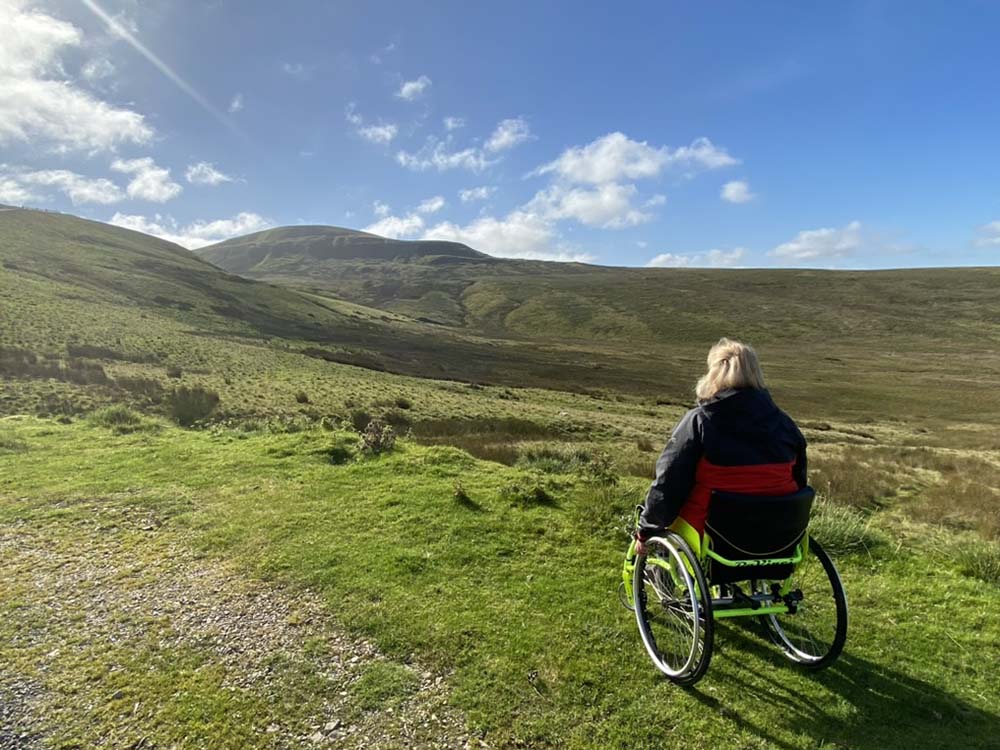
What are some alternative solutions to make trails accessible while preserving their natural beauty?
Setting up hubs like those we’ve established in the Yorkshire Dales and the Forest of Bowland enables people to borrow all-terrain wheelchairs, providing access to areas that would otherwise be out of reach. We’ve placed different types of these wheelchairs in various locations, catering to different abilities and adventure types.
It’s not about altering the landscape…
…but offering equipment that can handle rugged terrain and steep gradients without impacting the natural environment.
It’s not about altering the landscape but offering equipment that can handle rugged terrain and steep gradients without impacting the natural environment. Often, the real barriers are man-made structures—many gates and stiles across the landscape are now redundant as livestock no longer grazes those fields. Creating gaps is a far better solution than installing gates.
Are there any upcoming projects or collaborations you’re excited about?
I’m thrilled about the work being done by the YHA and Ordnance Survey to create more inclusive facilities and walking routes for people with mobility challenges. It’s also great to see a positive shift in attitudes toward disability inclusion. Channel 4 did a fantastic job showcasing the Paralympics, and events like the Invictus Games demonstrate to the world what is truly possible. While there is still much progress to be made, there is also plenty to celebrate.
If you would like to find out more about Debbie and the amazing work she does with her charity, Access the Dales’ please follow the links below.
www.debbienorth.org
www.access-the-dales.com
Debbie’s New Book – North Yorkshire Dales Accessible Walks For All
Read more great articles about accessibility from Debbie North
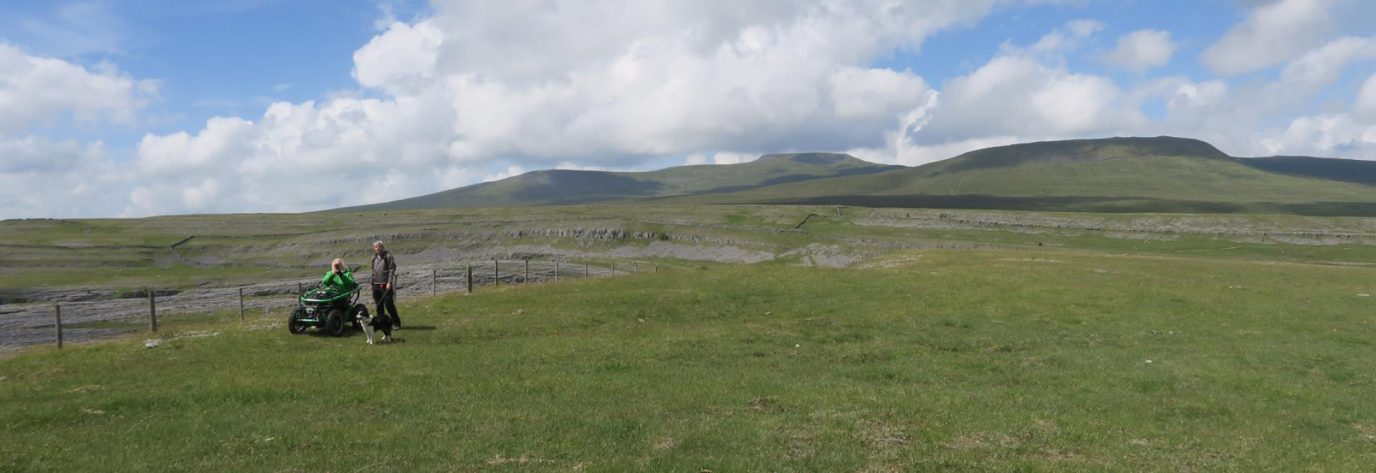
Top 5 accessible walks
Debbie North, from Access The Outdoor Guide, uses a variety of off-road mobility wheelchairs to access the countryside and wants to inspire other less-mobile users to do the same through accessible wheel-friendly walks. Here are five of her favourites.

Best stile-free walks in Britain
We asked our friends at Access TOG and Access The Dales to share their favourite stile-free walks. Whether you’re a wheelchair user, a family with a buggy or recovering from an injury, these accessible routes make it easier to enjoy the great outdoors. Here are the best stile-free walks in Britain.

By Hilary Pullen
Meet Hilary, Editor of Get Outside – the Ordnance Survey Blog. Hilary is based in North Wales and loves hiking with her dogs in the mountains of Eryri and Bryniau Clwyd, you can find her on Instagram @nearlyuphill and read her guides to walking in North Wales on her blog. Drop her an email hilary.pullen@os.uk if you are interested in posting an article on Get Outside.
